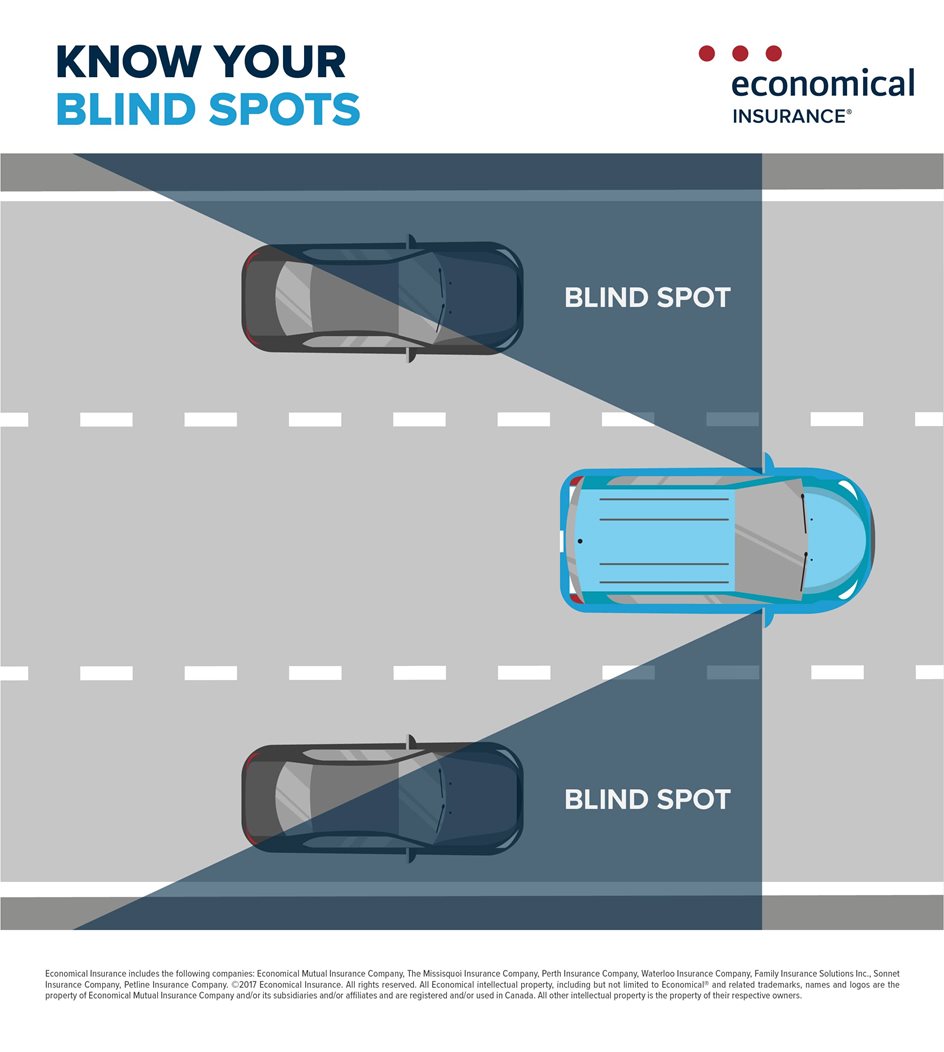All drivers deal with blind spots whenever they get behind the wheel, regardless of the type of vehicle they drive. Understanding blind spots can help you prevent collisions and arrive safely, every time.
What is a blind spot and how can I find mine?
Simply put, a blind spot is any area where someone’s view is obstructed. When you’re in the driver’s seat of your car, blind spots include areas of the road you can’t see by looking in front of you, in your rear-view mirror, or in either of your side-view mirrors. Your largest blind spots are usually located on both sides of your vehicle, towards the back — but other blind spots occur when your view is blocked by your windshield pillars, rear- or side-view mirrors, headrests, passengers, or that dining table you’re transporting.
All vehicles are different, so it helps to do a quick test to find out exactly where your blind spots are located. Sit in the driver’s seat, buckle up, and have someone slowly walk around your car while you look in your mirrors. When the person disappears from your view, physically turn around and look at them to discover your blind spot.

How can I prevent blind spot related collisions?
Being aware of obstacles in your blind spots is the key to preventing blind spot related collisions, especially when you’re changing lanes or turning. You should make a habit of physically turning your head in the direction you’re planning to drive and looking directly into your blind spot, rather than relying on your mirrors. To avoid being hit or cut off unexpectedly, be aware of other drivers around you and try to stay out of their blind spots as much as possible — especially transport trucks (if you can’t see the driver in one of his mirrors, he probably can’t see you either).
While no tool or technology should replace your good old-fashioned mirror and shoulder checks, these may help shed a little light on your blind spots:
Aftermarket blind spot mirrors
A blind spot mirror (usually a round, convex mirror that sticks onto your side-view mirror) can broaden your range of vision to help you see what’s coming up beside you. If you choose to purchase a blind spot mirror, follow the manufacturer’s directions to make sure it’s positioned properly for the best view.
Blind spot monitoring systems
Many new vehicles come equipped with blind spot detection systems, which use sensors or cameras to detect vehicles or other objects in your blind spots. Some systems will jiggle your steering wheel or gently steer you back into your lane if you try to switch lanes when another driver is in your blind spot, while others simply display warning lights on your side-view mirrors or sound an alert of some kind.
Safety tip: It may feel unnecessary to check your blind spot when you’re turning (after all, it’s unlikely that someone will come up beside you if you’re turning from the correct lane, isn’t it?), but you can never predict when other drivers, cyclists, or pedestrians will come up beside you. It’s best to check your blind spot every time you change your path, whether you’re switching lanes or turning.
Sometimes an accident happens, even when you’ve taken all the right steps to prevent it — and that’s why you have car insurance. Reach out to your licensed broker to review your policy and make sure you’ll be covered in the event of a collision.
Want to help a new driver understand blind spots and steer clear of collisions? Share these tips on Facebook or Twitter.